Interview with Katja van der Meer, Policy Officer at ECDPM – a leading independent ‘think and do tank’ that wants to make policies in Europe and Africa work for inclusive and sustainable development. She has worked at ECDPM since 2019, co-authoring numerous research reports and giving advice to several organisations. At ECDPM, she works at the European foreign and development policy and inclusive governance and accountability teams. She is also the gender focal point for the Europe and Africa in the world cluster. She focuses on European Foreign and Development Policy, with a particular interest in health, gender equality and human development.
The EU’s approach to international partnerships is moving the EU away from traditional grant-based support to an increased use of private sector instruments (such as loans, guarantees, and blending). In your view, what are the consequences of scaling up this approach for partner countries?
The consequences will heavily depend on the context and the partner country in question. Broadly speaking, increased use of innovative financing instruments can bring greater leverage of resources and amplify the impact of European development assistance. With development financing, including loans, guarantees and blending, the EU can bring in much-needed resources to help narrow the funding gap to reach the Sustainable Development Goals (SDGs). Innovative financing modalities can leverage public resources and attract public and private finance to invest in health at scale and for greater impact. For partner countries, this would allow increased access to funding in sectors and projects where interests align with those of the private sector.
Both private sector instruments and grants have a role in the EU’s external funding mix, both now and in the future. Greater weight given to innovative financing – if it happens at the expense of grants – may result in prioritising sectors where the track record of investments is stronger and considered profitable – such as energy – and away from sectors where finding bankable projects is challenging. This risk is even higher in a context where the EU’s geopolitical interests and priorities tend to be prioritised over sectors with clear human development objectives. That being said, within the health sector, while still small in volume, investments by development finance institutions are growing. The focus of private sector instruments in health financing, however, seems to largely be on the infrastructure side, pharma manufacturing, and pharmaceutical supply chains. There are some innovative financing modalities, such as development impact bonds, where investors make a return based on development outcomes. However, grant-based funding has a key role in critical social programs in health, education, and poverty alleviation that improves the lives of vulnerable and marginalised groups but does not generate financial profits.
The manner in which scaling up innovative financing modalities affects partner countries is context dependent. While countries with fairly developed markets and stable/attractive investing environments have access to opportunities for cooperation in areas of mutual interest, partners in more challenging or fragile contexts will not reap the benefits of this shift. Firstly, many countries in the Global South already face high levels of debt distress, which limits the opportunities for innovative financing modalities. Here, debt-to-health swaps offer some promise in creating fiscal space in LMICs, but critics have pointed out their limited effect in reducing debt burdens. Second, the business models of Development Finance institutions (DFIs) and International Financial Institutions (IFIs) do not easily allow investments in vulnerable groups, or investments in fragile and least developed country (LDC) contexts and more broadly in nascent markets. Yet at the same time, it is the LDCs that are the most dependent on external assistance for their health systems.
The Covid-19 pandemic highlighted once more that health is a global concern and it requires a global response. However, with so many conflicting priorities, global health runs the risk of being side-lined. In your view, how should Global Health be featured in the EU’s agenda?
As the EU continues to navigate competing priorities, it is imperative that global health remains a central pillar of its agenda. However, in the context where the EU is increasingly harnessing its international cooperation to serve its own self-interest, the narrative around how global health serves the EU’s interests, should be better articulated. For me, three key points should be more widely acknowledged by decision-makers:
- Global Health serves the EU’s strategic self-interest. It is not so much of a question about “if” there will be another pandemic, but rather a question of “when” will it take place, how dangerous will it be, and what were it will emerge from. Some alarming outbreaks of Ebola, M-pox and Lassa Fever have recently taken place in Africa, and in Bangladesh and India we have witnessed outbreaks of the brain-invading Nipah virus. In the US and Europe, bird flu is still prominent, albeit human infections are rare. With strong health systems, we are better able to combat health threats. Therefore, investing in global health is not only an altruistic endeavour but also a strategic imperative for the EU.
- Global health is a prerequisite for the Global Gateway’s success. The success of the EU’s Global Gateway initiative relies on healthy and educated populations. To achieve its ambitious goals in infrastructure, energy, and digitalisation, the Global Gateway requires investments in healthcare systems that can underpin these efforts. Otherwise, it risks being undermined by recurring public health crises and weak health systems. The importance of human development has also been highlighted by the Commissioner for International Partnerships, Jozef Síkela, who emphasised that “education and health are not just thematic priorities in their own rights – they are prerequisites for attaining the other Global Gateway goals and are embedded in them.” This sentiment must go beyond rhetoric to include a real commitment to placing health at the heart of international cooperation strategies.
- Supporting Global Health can improve the EUs partnerships and serve mutual interests. Supporting partner countries’ health systems can be used to improve the reputation of the donor country, and also to build alliances. Aid to health systems can improve relations with partner countries when there are tensions. Furthermore, investments in health can open avenues in collaboration, for instance in R&D around global health, and help foster joint research. Health thus has an opportunity to be a tangible area where European and African interests converge and which can strengthen the EU-AU partnership.
These arguments have been made time and again by analysts, including ECDPM, and they are reflected in the 2024 Council Conclusions on the EU’s Global Health Strategy, as well as in the written answers of Commissioner Síkela to the European Parliament. During the Belgian Presidency of the Council of the EU in the first half of 2024, these messages were also constantly highlighted during high-level events on Global Health. Yet, I would like to see these arguments better reflected in the practice, by stronger prioritisation of Global Health in the EU’s external action.
Health is closely linked to both the EU’s external and internal interests. Therefore, it’s crucial for the multi-sectoral and interconnected nature of health to be better acknowledged by strengthening cooperation and finding synergies between DG INTPA’s Global Health programming, and the initiatives led by DG SANTE and DG ECHO. Beyond this, the EU needs to ensure that its policies, for instance on R&I and trade, do not undermine its global health objectives.
The EU has started developing its new external action financing instrument, which will likely have the Global Gateway as its main pillar. What do you expect to see in the proposal for this new instrument? What are, according to you, the key features it will need to have to ensure human development, in particular health, will continue to be adequately prioritised by the EU?
The EU’s post-2027 Multiannual Financial Framework (MFF) – the EU’s seven-year budget that defines the amount the EU will spend on internal and external affairs – must address unprecedented geopolitical instability, wars in Ukraine and the Middle East, economic competitiveness, strategic autonomy, and migration priorities. The negotiations are expected to be difficult, and the stakes are exceptionally high. The external heading of the MFF will have to demonstrate its relevance and importance to European political leaders if it is going to be protected from cuts.
Going to the level of the instrument itself, very little can be said yet. While fundamental changes have been proposed, a complete overhaul of NDICI-GE is still less likely than smaller, incremental changes in line with mid-term evaluation recommendations. These could include clearer priorities, greater flexibility and rapid response capacity, changes to governance, larger funding pools with less earmarking, and simplifications in programming, for instance.
There are some features that the new funding instrument should include to ensure that the EU’s support to human development is adequately prioritised in the future.
- First, the EU needs to ensure adequate funding for human development. A key point of negotiation for the new instrument will be the percentage of funding dedicated to Official Development Assistance (ODA). This will be critical for health, where grants have traditionally played a big role. Moreover, it will be important to explicitly allocate funding to human development. Currently, this is done by including a spending target of at least 20% in the NDICI-GE. A spending target gives a clear political signal to prioritise human development, encourages mainstreaming it across other priorities, and is a useful tool for monitoring and accountability. While there are also downsides and trade-offs – including the increasing complexity of programming and reduced flexibility – spending targets can be a valuable tool to secure a level of funding for human development in the current context. The instrument should also foster the use of innovative financing modalities that can mobilise additional resources to key development objectives.
- The instrument should foster multi-sector approaches. Health is inherently linked to other areas, such as the digital transition, crisis-management, climate change, nutrition, and gender equality. Health should thus be placed at the heart of interventions in these sectors, when applicable, to foster sustainable results.
- The instrument should support research and development (R&D) in global health. This includes investing in neglected tropical diseases, antimicrobial resistance, and emerging health threats, while fostering local innovations in low- and middle-income countries (LMICs). Strengthening support for LMIC-led research and finding synergies with the EU’s potential Competitiveness Fund and other initiatives is crucial. Flexible funding mechanisms must be included to address health crises effectively.
By incorporating these elements, the EU can ensure that human development, particularly health, remains a cornerstone of its external financing and development agenda. This approach would not only improve health outcomes globally but also strengthen the EU’s position as a value-driven and credible partner in global health. While we cannot predict when and where the next major health threat will emerge, we can take preventative action to ensure health systems globally are robust. Now is the time for action. Civil society, global health experts, and development partners must mobilise to ensure health is not sidelined amidst competing priorities. By making the case for health as a cross-cutting enabler of development and resilience, serving also the EU’s priorities, it is possible to secure its rightful place in the EU’s agenda for the next years.



